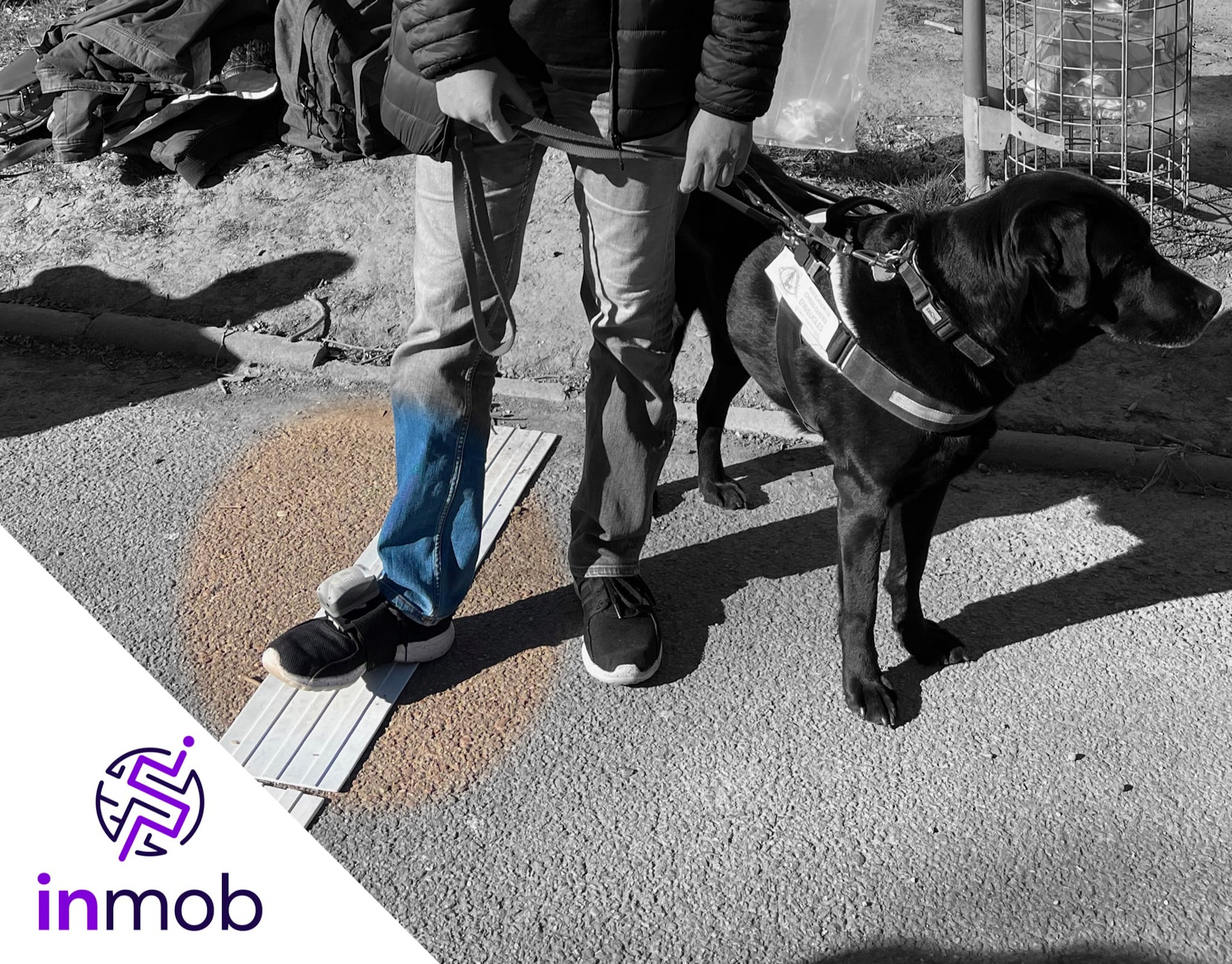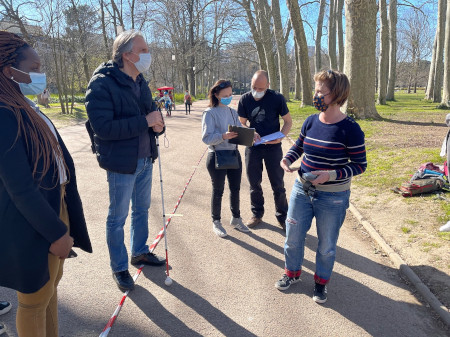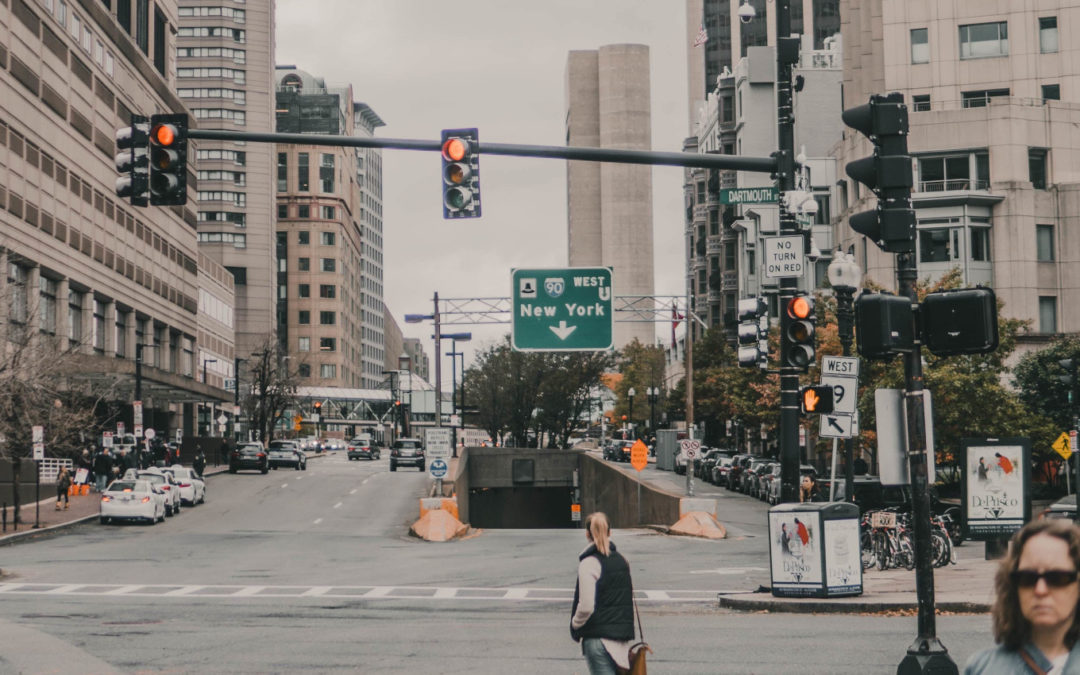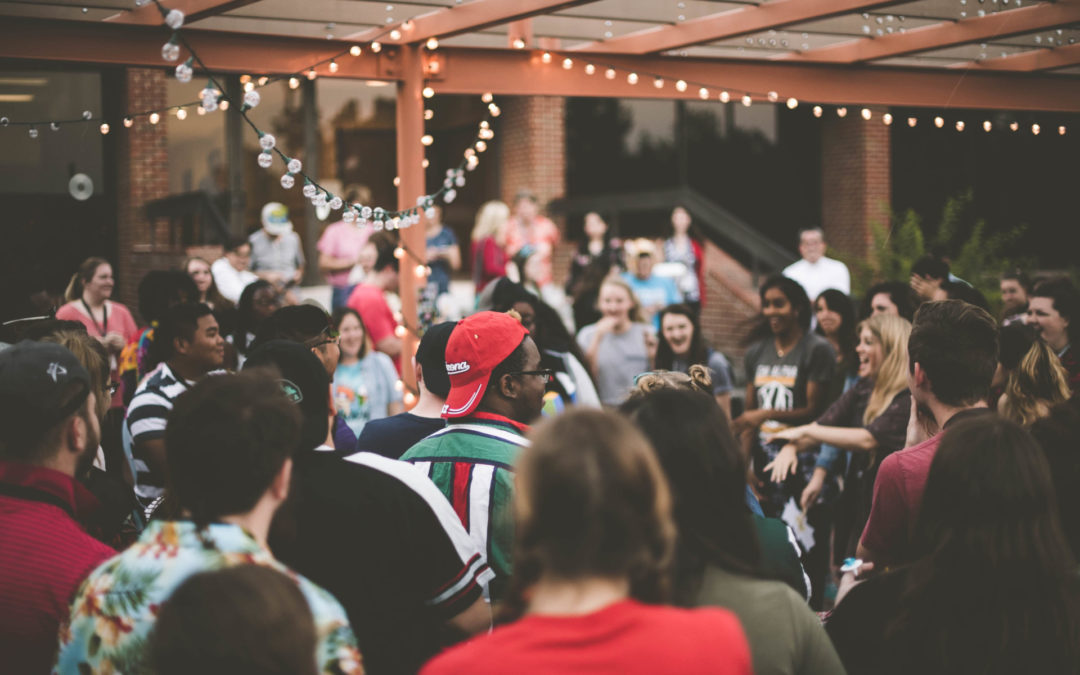
Everything You Have Always Wanted to Know on Geolocation | Interview of Valérie Renaudin, Head of GEOLOC Team at University Gustave Eiffel, France
In a previous article, we had already talked about artificial intelligence and how this technology serves people with disabilities. Now, let’s focus on geolocation, a term that’s more and more mentioned in the media. Indeed, everyday we use geolocation, without even realizing it, with GPS that truly make part of our daily lives and have thus become indispensable. But how does it work exactly? How can geolocation have an impact on everybody’s mobility including people with disabilities’ mobility?
In order to decipher all that’s hidden behind the notion of “geolocation”, we met with Valérie Renaudin, Head of GEOLOC Team at University Gustave Eiffel in Nantes, France. In this interview, she lifts the veil on its operation and shares with us her vision, her missions as researcher and expert in this field.
In a few words, can you introduce yourself?
My name is Valérie Renaudin and I’m currently the Head of GEOLOC Team in Nantes (French West coast), as part of the University Gustave Eiffel. I have a mixed experience, both industrial and academic, spent on several continents during 15 years, in the French and German-speaking Switzerland. Plus the English-speaking Canada in the area of Calgary.
Can you explain to us the mission of the GEOLOC laboratory at the University Gustave Eiffel?
The GEOLOC laboratory focuses on geolocation in order to improve the mobility of people and goods. For several years, we’ve produced new ways to calculate and locate mobile objects, what we call dynamic positioning, that go with the rise of new mobility practices and new services based on the geolocation of their carriers.
Traditionally, we used to focus on elements related to transportation such as cars and trains and even more substantial elements meant for air or maritime transport. Later, with the rise of connected objects, we started to focus on the “man in the street” and his way to get around in order to improve his daily life mobility.
What are the challenges you’re facing regarding geolocation? And why?
The main challenge we’re facing today is providing an accurate and seamless geolocation to travelers throughout the whole multimodal chain, whatever their getting around may be, whether they’re in good health or have mobility impairments. If we’re interested in this particular challenge (and that’s truly one!), it’s because today the objects that are being used for geolocation weren’t conceived for it. The general public expects connected objects to provide geolocation in any place, this being the opposite of navigation systems that were specifically conceived for cars.
Today, we want connected objects, which have very low quality sensors, to be sufficiently intelligent to understand who we are while getting around. This way, they can provide the best possible tracing and ultimately, the best wayfinding solution.
Why are we so interested in these challenges?
It’s simply because it’s almost become something we are owed. Now we consider it’s something that’s available everywhere. We hear a great deal about connected objects, the power of smartphones or even AI. For the general public, the media implies that geolocation is a panacea. But in practice, the gained accuracy is far less important than the one we imagine. The consequence is that a lot of services suffer from it. This concerns emergency services during interventions or mobility support services for people with disabilities.
What do you say the connection between technology and mobility is? What will be the concrete benefits for citizens?
Today, technologies make mobility easier. We can see how much the use of technologies shakes up our ways to get around. Personally, having lived on several continents and worked in Canada, I realize how tools have now become essential. I will no longer be able to go without a geolocation solution when I use transportation: a unique and do-it-all tool that enhances my mobility. Being impatient behind the wheel and hating traffic jams, I’m very pleased to be able to use apps such as Waze that use geolocation and combine it with some interpretation to give me the best possible routes.
Today, thanks to these connected objects, we are able to address everybody, regardless of their specificities. That’s the advantage smartphones but also their combinations with artificial intelligence methods provide. Globally, what artificial intelligence can promise us tomorrow is maybe to provide solutions that are adapted to suit our differences. In other words, tomorrow people with impairments or disabilities can hope their difference becomes a descriptive richness in their getting around.
I realize how capable we are today to incorporate differences, whether they’re personal or cultural, through solutions we can develop.
How do you see tomorrow’s mobility?
I see tomorrow’s mobility as something plural. Meaning that instead of benefiting from an universal solution such as I could have developed in the past, a solution for which we need to adjust for it to be performing in our everyday lives, we can imagine that solutions will know how to address me: Valérie Renaudin or you, Mr X, Mrs Y throughout our trips.
I imagine this mobility to be sufficiently seamless to enable me to increase my autonomy, to maybe increase my abilities in the course of my aging and finally to explore an environment, whether it’s familiar or not, in a different way.
Inclusive mobility, such as mobility for people with disabilities, seems to be a utopia or on the contrary a short-term reality.
I think it’s in the not so distant future and let’s be crazy, maybe short-term. Actually, inclusive mobility is this ability to address solutions or to invent solutions for all, whatever their mobility abilities may be. To be clear, the solutions that are currently being deployed in today’s smartphones don’t take into account mobility specificities nor mobility impairments. Nevertheless, the progress about sensors, the progress about calculation technologies, the comprehension of who we are, simply permit us to imagine that tomorrow we’ll be able to provide more suited solutions and thus to improve the notion of inclusive mobility.
Also, the ability to provide solutions that don’t depend on the infrastructure itself. Their deployment would also enable us to consider covering more vast territories and to make mobility available to people who wouldn’t choose these solutions if they had to pay expensive subscriptions or to subscribe to the latest technology.
Any last words?
One of the most important obstacles concerning the adoption of technologies that permit to improve mobility via an accurate geolocation is actually to have to adopt objects such as smartphones, smartwatches, smart glasses for which the offer is quite limited and consequently having to add an extra technological object to help us get around. It’s interesting but at the same time it causes a lot of problems. They are calculation problems but also problems about the adoption of technologies and choice. I may want to have a mobile with a particular color. Or if I want glasses, will the cameras make them heavy?
Even if we’ve been talking about this for a while and that I haven’t seen it being deployed, won’t we, ultimately, come to a stage when technology will fully be integrated in fabrics and textiles we wear today? Mainly, this integration in fabrics is limited to the problems of antennas, even batteries. But if we could hide somewhere on our clothing all of this technology, we could benefit from an individual and personalized guidance, becoming hands-free. A guidance that would turn into our companion, our daily mobility companion and even our companion to improve our lives.
What technologies do people with disabilities use in their everyday lives? Read out our articles:
The Smartphone: a Revolution for the Blind and Visually Impaired!
Mobility Apps for Blind People or how Technology Can Replace Special Assistance at the Airport?
9 Must-Have Apps for People with Physical Disabilities in 2020
media

The main challenge we’re facing today is providing an accurate and seamless geolocation to travelers throughout the whole multimodal chain, whatever their getting around may be, whether they’re in good health or have mobility impairments.
writer
Christine Pestel
Communication Manager
stay updated
Get the latest news about accessibility and the Smart City.
other articles for you

Open Data Is Key to Fostering Universal Accessibility
Open data represents an opportunity for cities to reach universal accessibility. It shows the missing links of the mobility chain.
Our Audio Beacons Guide the Blind and Visually Impaired at the Helsinki Subway
The Helsinky subway improved their audio signage system by installing on demand and remotely activated audio beacons.
7 Good Reasons to Install Audio Beacons at Your Public Transport Network
Audio beacons are an efficient way to provide more autonomy to blind and visually impaired people. They can easily use public transport.

Will Remote Activation Become the Norm for Accessible Pedestrian Signals?
More and more cities like New York have been exploring remote activation to trigger accessible pedestrian signals.
share our article!
more articles

Disability Statistics in the US: Looking Beyond Figures for an Accessible and Inclusive Society
Disability Statistics in the US: Looking Beyond Figures for an Accessible and Inclusive Society Around 61 million adults in the United States live with a disability. Diving into disability statistics in the US will help us know exactly who is concerned and what...
Our Audio Beacons Guide the Blind and Visually Impaired at the Helsinki Subway
Our Audio Beacons Guide the Blind and Visually Impaired at the Helsinki SubwayOur audio beacons equip the new line of the Helsinki subway in Finland. They help blind and visually impaired people locate the points of interest of a station. For users with visual...

At What Intersections Should You Install Accessible Pedestrian Signals?
At What Intersections Should You Install Accessible Pedestrian Signals? When you install accessible pedestrian signals, you first need to ask yourself where exactly they are needed. Are there any intersections blind and visually impaired pedestrians particularly...

Invisible Disabilities: 80% of Disabled People Are Concerned!
Invisible Disabilities: 80% of Disabled People Are Concerned! Having a disability = using a wheelchair. That’s one persisting cliché! Actually, only 2% of people with disabilities are wheelchair users but 80% have invisible disabilities! What we mean by “invisible...
NEVER miss the latest news about the Smart City.
Sign up now for our newsletter.
Unsubscribe in one click. The information collected is confidential and kept safe.
powered by okeenea
The French leading company
on the accessibility market.
For more than 25 years, we have been developing architectural access solutions for buildings and streets. Everyday, we rethink today’s cities to transform them in smart cities accessible to everyone.
By creating solutions ever more tailored to the needs of people with disabilities, we push the limits, constantly improve the urban life and make the cities more enjoyable for the growing majority.


